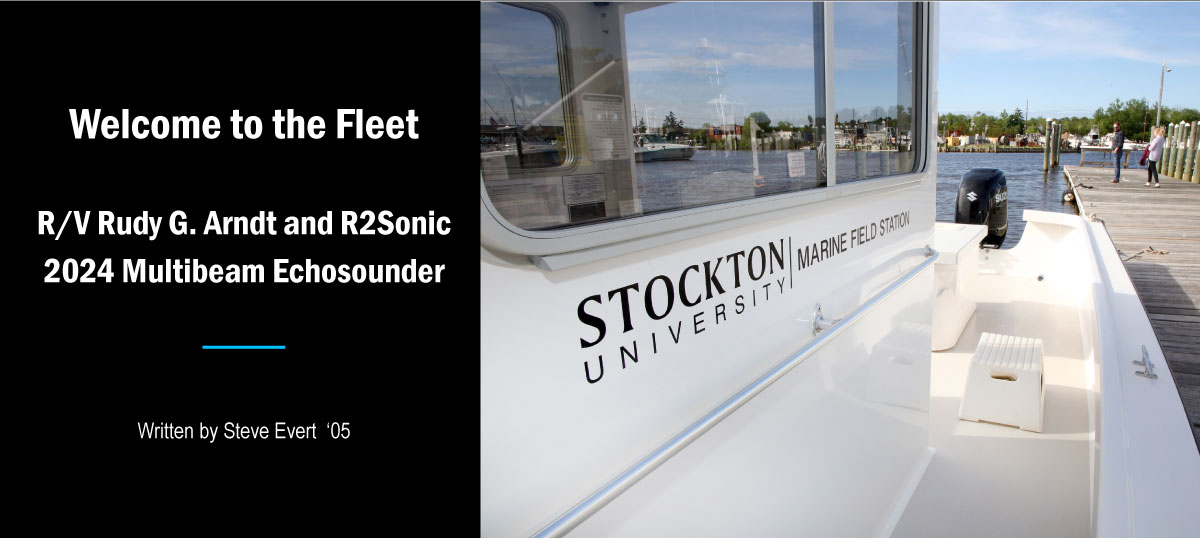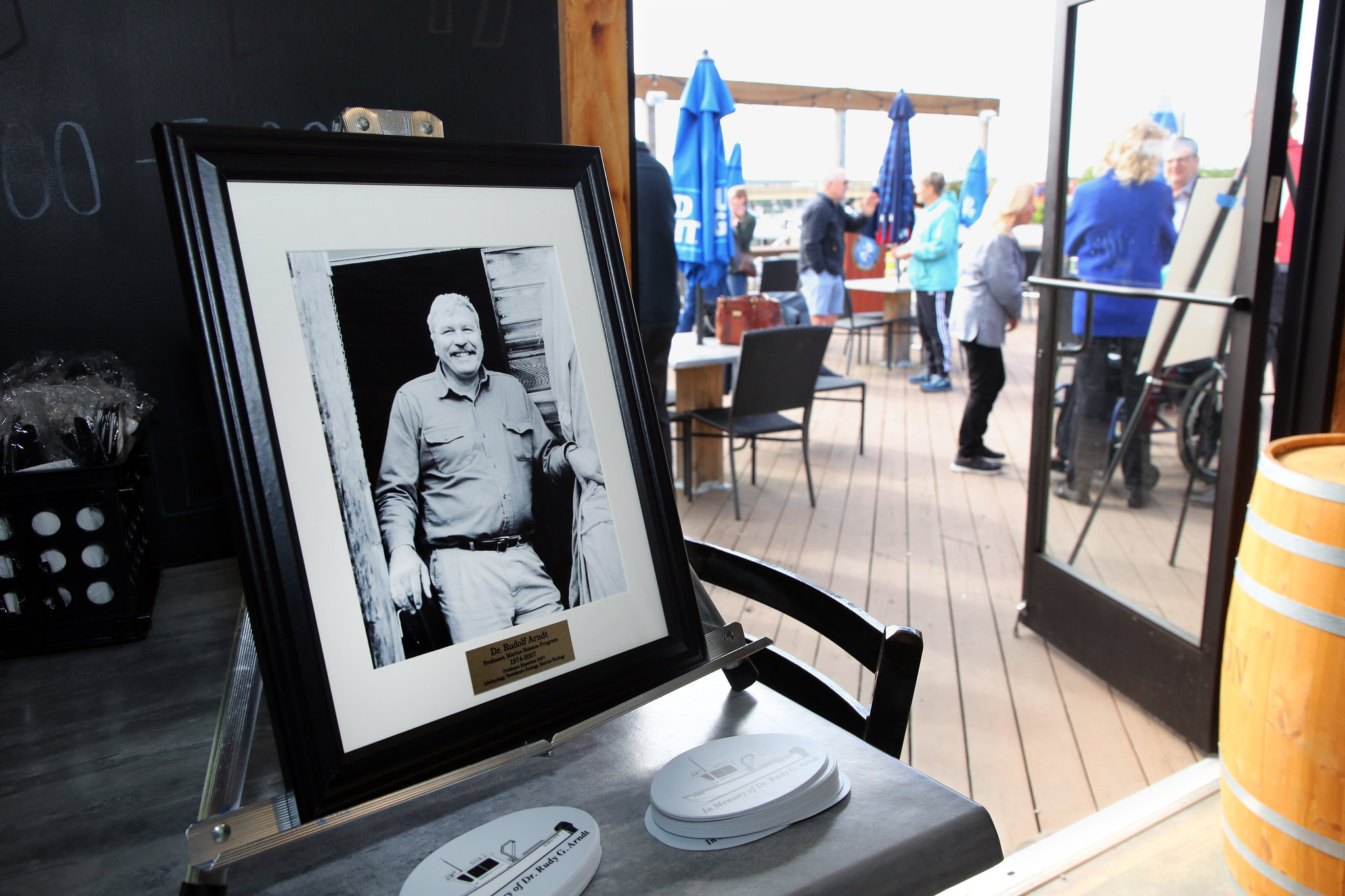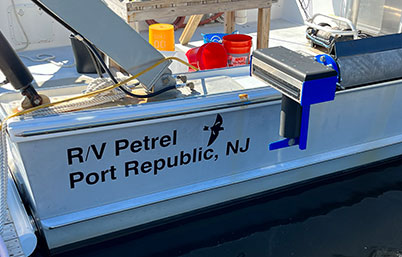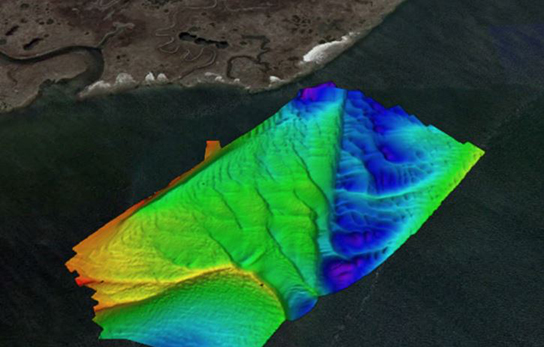Fall 2022 Issue

Photo credit: Susan Allen '04, '14
The Marine Field Station (MFS) in Port Republic provides the marine operations support to the University’s successful and growing coastal science programs. In addition to the undergraduate programs in NAMS, the facility supports the Coastal Research Center and the graduate programs in Professional Sciences and Coastal Zone Management.

The MFS and its professional support staff are responsible for housing, maintaining
and operating the research vessel fleet and the major field sampling instrumentation
required by the faculty teaching and research programs. While the facilities of the
eight-acre waterfront property are modest, the physical resources rival that of many
of our nation’s doctoral granting and very high research activity institutions (R1
institutions).
In late 2021 and early 2022, two major capital equipment acquisitions occurred that will strengthen both the teaching and research programs of our dedicated faculty. The first is especially dear to many of us in the Stockton community, named in honor of one of our founding marine science professors Dr. Rudy Arndt. The second is especially gratifying, having been acquired through a highly competitive grant competition often dominated by R1 institutions with names synonymous with ocean research.
Ardnt had an indelible impact on thousands of students as one of the founding members of the marine science program, teaching and conducting field research in fisheries and herpetology for over 30 years until his death in 2019 at the age of 77. He was a proponent and consistent end-user of the NAMS field facilities. The original facilities were rented space in Brigantine until the 1992 move to Stockton-owned property in Port Republic. Arndt operated boats himself, beginning in the 1970s with the college’s pair of small aluminum boats.
After his passing in 2019, the Arndt family, specifically Judy (sister) and Alex Oppedyk, gifted the funds to construct the vessel in Rudy’s honor. The R/V Rudy G. Arndt was designed to be capable of carrying more students than existing fleet vessels while maintaining the shallow draft requirements of the program’s coastal bay work. The new 26’ vessel is a purpose-built garvey, hailing from an original New Jersey design but built in the tidal waters of Virginia’s Chesapeake Bay (Jennings Boatyard, Reedville, Virginia). The R/V Rudy G. Arndt was formally dedicated in a ceremony at Breeze’s Dock Bar & Grill on a perfect evening in May of 2022 and has already supported dozens of research students this summer.
Perhaps not as close to our hearts, the second capital equipment acquisition this year did evoke great pride in those that contributed to the National Science Foundation Major Research Instrumentation (NSF-MRI) proposal. The NSF-MRI grant program is a nationwide and incredibly competitive program, often dominated by R1 institutions. The NAMS team, led by principal investigator Professor Peter Straub, refined annual attempts to be awarded the NSF-MRI grant after two highly rated but denied proposals (2019 and 2020). The third time was a charm and resulted in a direct award of $301,600 to secure a high-resolution multibeam echosounder to map and visualize the bathymetry, bottom types, and submerged structures of New Jersey’s coastal waters. Submerged structure mapping will include continued work on historical shipwrecks and artificial reefs, as well as future work on ocean energy platforms. Several projects have been initiated, including an Atlantic Shores and Orsted/Ocean Wind-funded project focusing on the ecological succession of artificial reef installs (see “Ships Sink for Science”). Specifically, the grant funded the purchase of an R2 Sonic 2024© multibeam echosounder, acquisition of Quality Positioning Services© maritime software solutions, and training on all systems and software. Both the instrument and the software package are state-of-the-art in the current hydrography field, an area that NAMS is developing through increasing course and research offerings based at the Port Republic Marine Field Station.
R2Sonic 2024 Multibeam Echosounder





